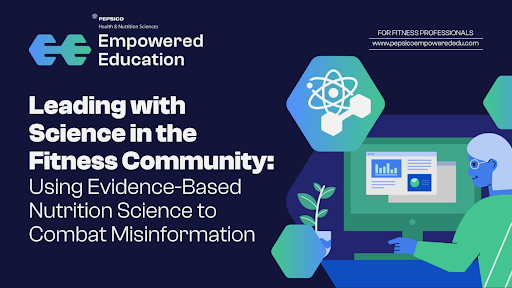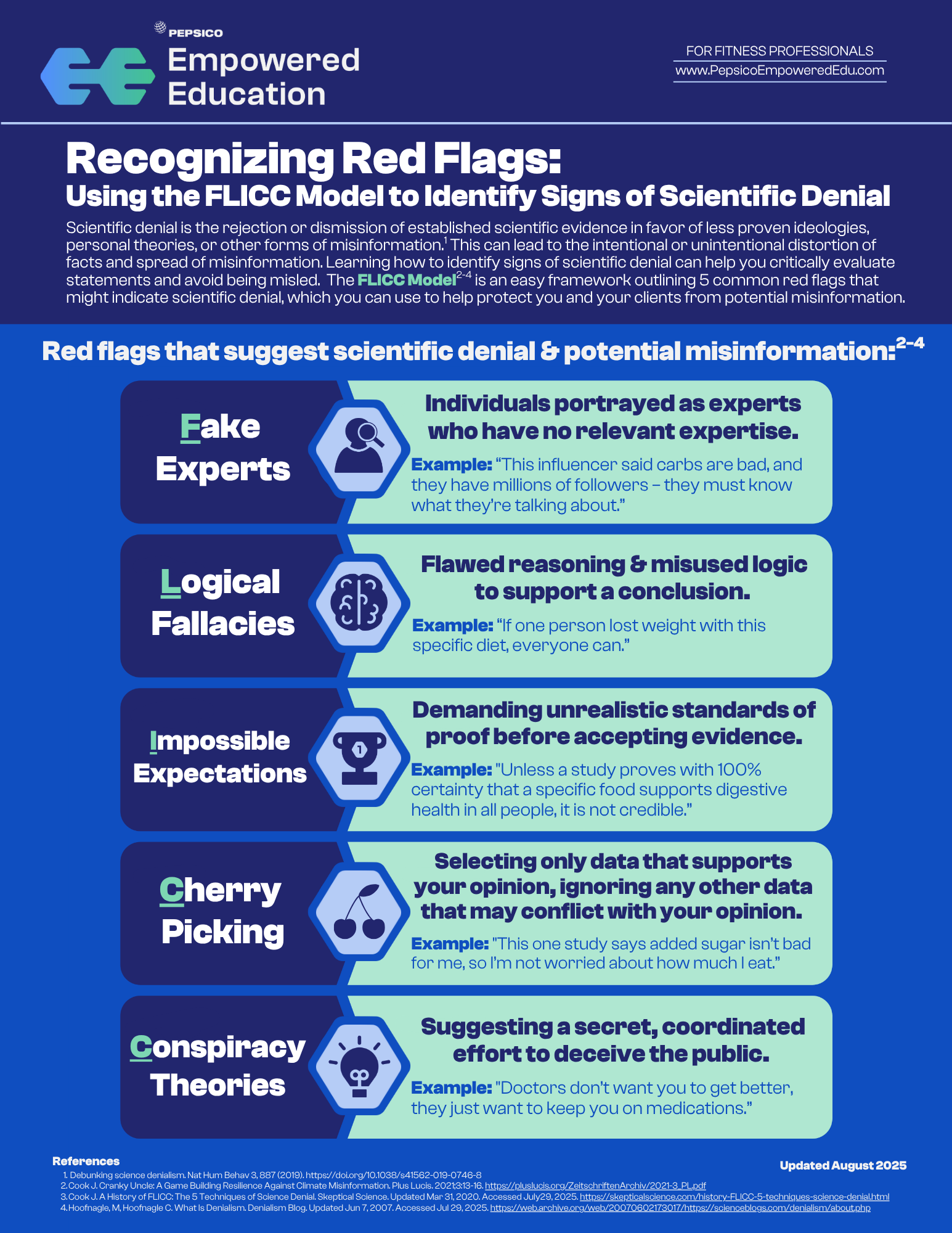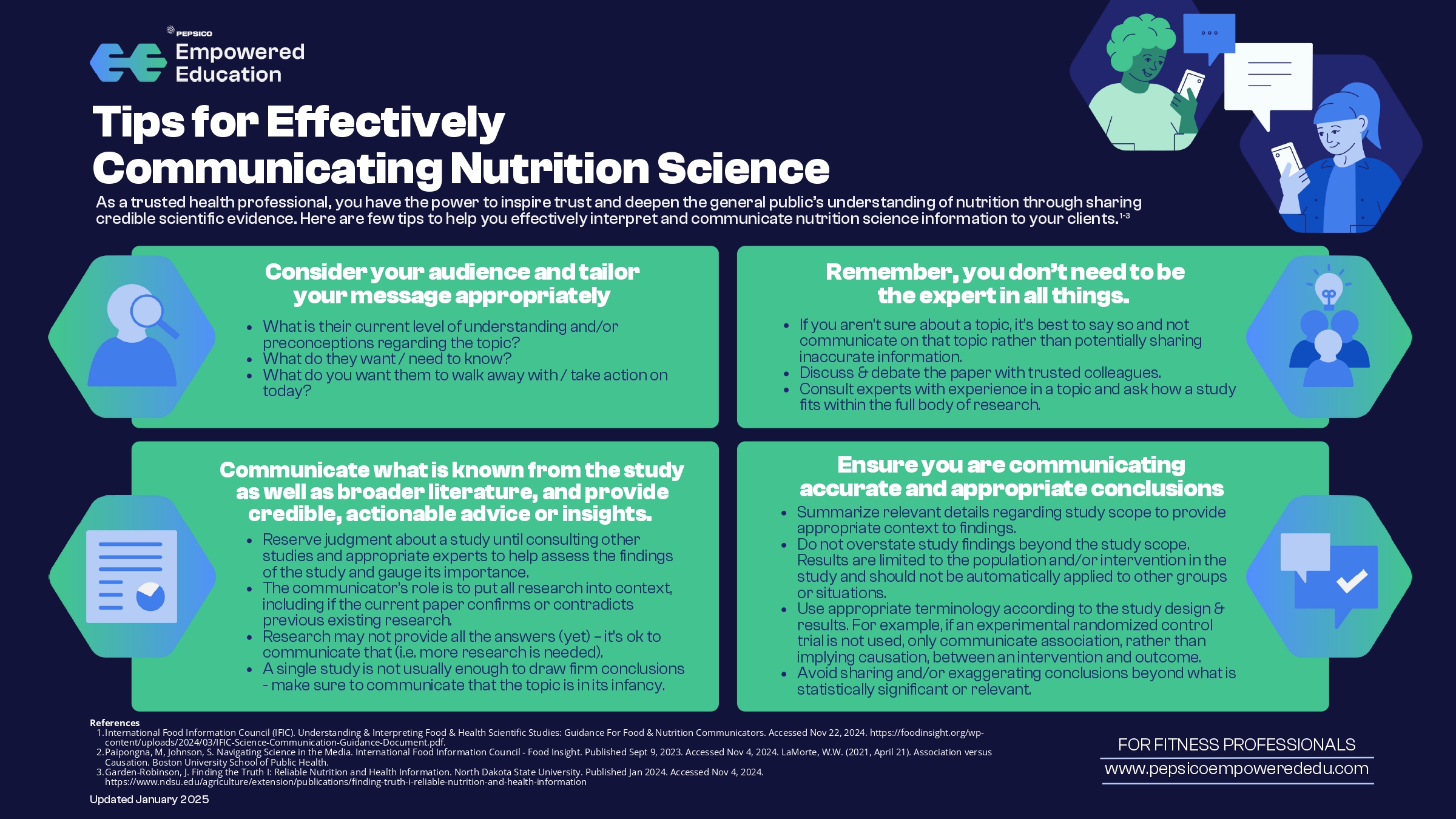Leading with Science in the Fitness Community: Using Evidence-Based Nutrition Science to Combat Misinformation
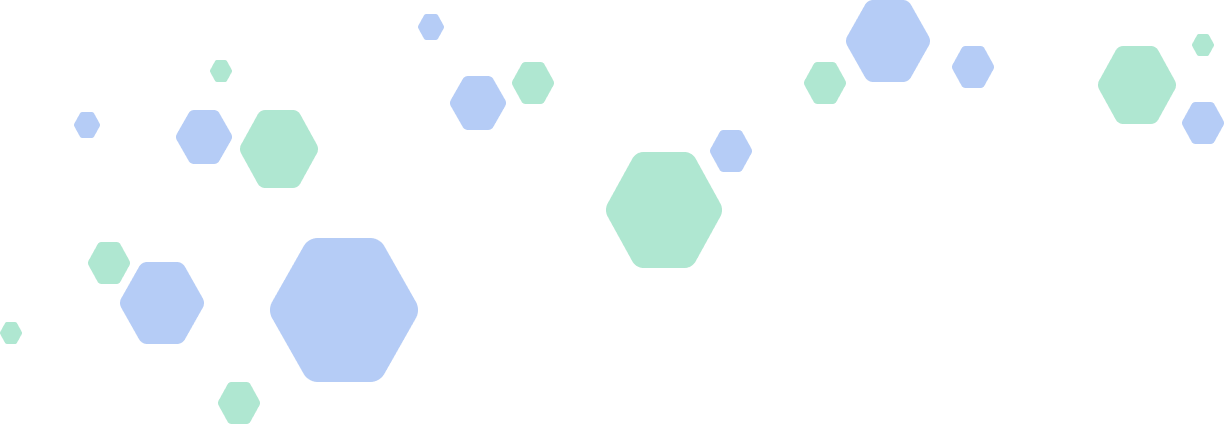
Nutrition research is increasingly difficult for the public to navigate - not only due to complex language but also the depth and volume of information shared. The rapid spread of information through media makes it essential for fitness professionals to address clients’ food and nutrition concerns. Fitness professionals are uniquely positioned to build trust by communicating accurate scientific information. This session equips fitness professionals with tools to interpret nutrition science, critically evaluate sources, assess health information from media, and present it to clients in the proper context. We’ll explore real-world examples of how research is translated into media headlines, credible and not, and examine the impact misinformation can have on public understanding. Emphasis will be placed on the importance of effectively communicating nutrition information to support informed decision-making and promote health literacy.
Learning objectives
- Develop understanding of how to interpret scientific information, including quick tips for digesting a scientific paper and interpreting results.
- Learn how to best evaluate health information found online and credible sources to turn to for nutrition science information.
- How to evaluate health information shared via media outlets and social media.
- Learn the importance of preventing the spread of nutrition misinformation and how to communicate evidence-based nutrition information effectively.
- Interpreting nutrition science
- Evaluating information from media and online sources
- Preventing nutrition misinformation
- Supporting health literacy
This webinar is accredited for 1.0 continuing education credit (CEC) by the American College of Sports Medicine (ACSM) until August 21, 2026.
This webinar is accredited for 1.0 continuing education unit (CEU) by the National Council on Strength & Fitness (NCSF) until August 31, 2026.
Available Certificates

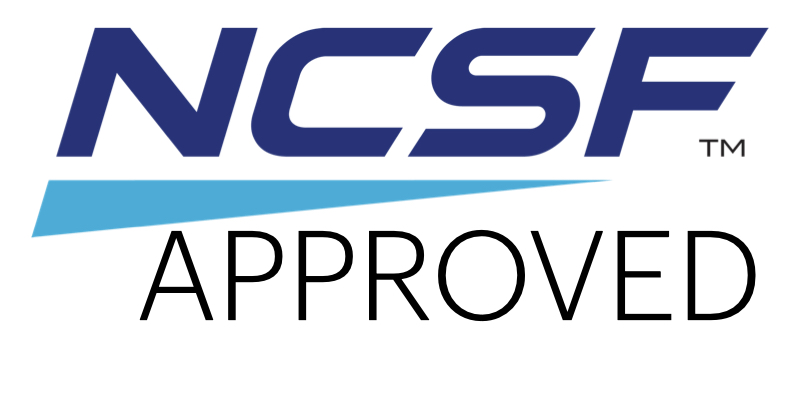
Basic Info
To receive your certificate, simply fill in your details and complete the following questionnaire. You will need to answer at least 70% of the questions correctly to receive your certificate.
When you're ready, select the appropriate certificate corresponding to your registered governing body, enter your details, and click the 'Get Started ' button to get started.
Question 1 of 10
A __________ is an error in reasoning where an argument is made using invalid logic or irrelevant points, lacking substantial evidence to support the conclusion.
Question 2 of 10
Which of the following studies have the highest level of certainty associated with it?
Question 3 of 10
A __________ study uses observational analysis to look at data from the past to find a potential correlation.
Question 4 of 10
All of the following are parts of the PICOT model for evaluating systematic reviews or meta-analyses EXCEPT
Question 5 of 10
The __________ effect is when someone has difficulty recognizing their own incompetence, which can lead to inflated self-assessments.
Question 6 of 10
Which of the following is NOT considered a credentialed nutrition science source?
Question 7 of 10
All of the following are ways you can be part of the solution regarding science communication EXCEPT:
Question 8 of 10
What is the difference between a systematic review and a narrative review?
Question 9 of 10
Why is “prebunking” more effective than “debunking” for addressing nutrition misinformation?
Question 10 of 10
What steps should fitness professionals take to communicate evidence-based nutrition information effectively?
Results: You scored 0 / 10
Thanks for taking this questionnaire. You need at least 7 correct answers to collect your certificate. Click below to retake the questionnaire.
Your answers:
Results: You scored 0 / 10
Thanks for taking this questionnaire. Congratulations! Please claim your certificate below.
Your answers:

Congratulations – you have successfully passed the quiz for the webinar Leading with Science in the Fitness Community: Using Evidence-Based Nutrition Science to Combat Misinformation.
Please click the "Claim Certificate" button to download your certificate of completion.
Question 1 of 20
Which of the following is NOT a type of messaging that helps identify a potential ref flag for misinformation?
Question 2 of 20
A __________ is an error in reasoning where an argument is made using invalid logic or irrelevant points, lacking substantial evidence to support the conclusion.
Question 3 of 20
Which of the following is a sign of high-quality science?
Question 4 of 20
Which of the following studies have the highest level of certainty associated with it?
Question 5 of 20
A __________ study uses observational analysis to look at data from the past to find a potential correlation.
Question 6 of 20
What is an approach that emphasizes the practical application of the findings of the best available scientific research called?
Question 7 of 20
All of the following are parts of the PICOT model for evaluating systematic reviews or meta-analyses EXCEPT
Question 8 of 20
The __________ effect is when someone has difficulty recognizing their own incompetence, which can lead to inflated self-assessments.
Question 9 of 20
Which of the following is NOT considered a credentialed nutrition science source?
Question 10 of 20
All of the following are ways you can be part of the solution regarding science communication EXCEPT:
Question 11 of 20
What does “prebunking” refer to in the context of science communication?
Question 12 of 20
According to the presentation, why is it important to critically analyze nutrition headlines before sharing them?
Question 13 of 20
Which of the following is NOT a recommended way to communicate nutrition science to clients or audiences?
Question 14 of 20
What is a red flag when evaluating nutrition advice shared on social media?
Question 15 of 20
According to the presentation, what should fitness professionals do if they do not know the answer to a nutrition question?
Question 16 of 20
What is the difference between a systematic review and a narrative review?
Question 17 of 20
How can fitness professionals use the PICOT framework when assessing research relevance?
Question 18 of 20
Which of the following is a common misinformation tactic in nutrition science communication?
Question 19 of 20
Why is “prebunking” more effective than “debunking” for addressing nutrition misinformation?
Question 20 of 20
What steps should fitness professionals take to communicate evidence-based nutrition information effectively?
Results: You scored 0 / 20
Thanks for taking this questionnaire. You need at least 14 correct answers to collect your certificate. Click below to retake the questionnaire.
Your answers:
Results: You scored 0 / 20
Thanks for taking this questionnaire. Congratulations! Please claim your certificate below.
Your answers:

Congratulations – you have successfully passed the quiz for the webinar Leading with Science in the Fitness Community: Using Evidence-Based Nutrition Science to Combat Misinformation.
Please click the "Claim Certificate" button to download your certificate of completion.
Thank You!
Thank you again for viewing our webinar! Feel free to navigate back to our home page at www.pepsicoempowerededu.com to learn more about our Empowered Education program and explore the variety of free education resources we have
available!
Please consider completing a webinar evaluation to help us gauge your satisfaction and webinar effectiveness. This evaluation is optional and not required to obtain your continuing education certificate but will help the Empowered Education team develop the most relevant content for you going forward.
